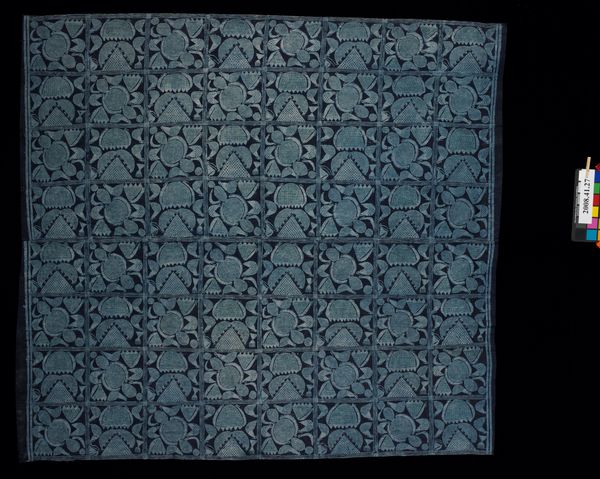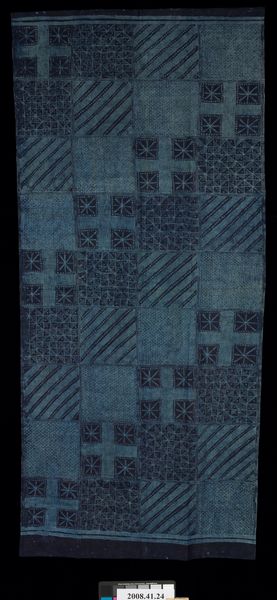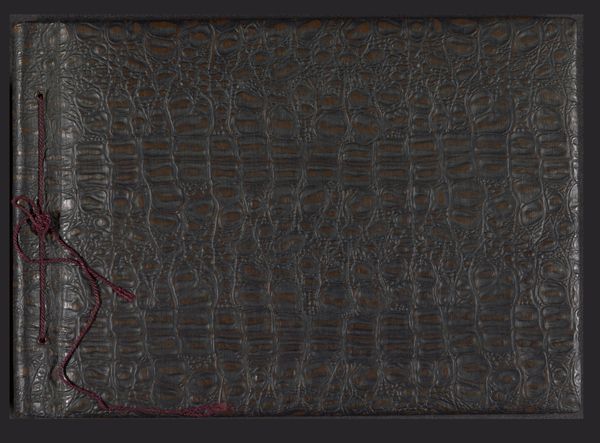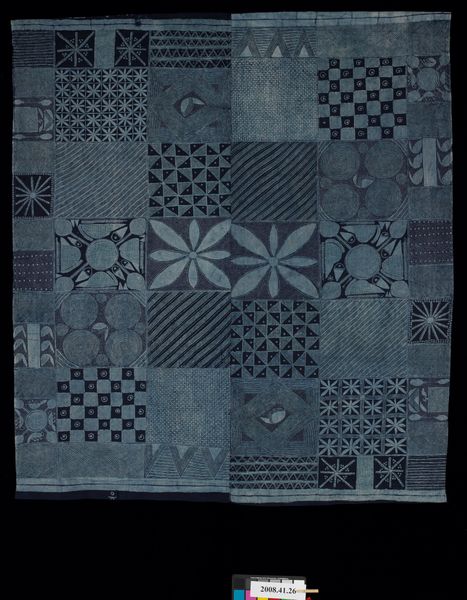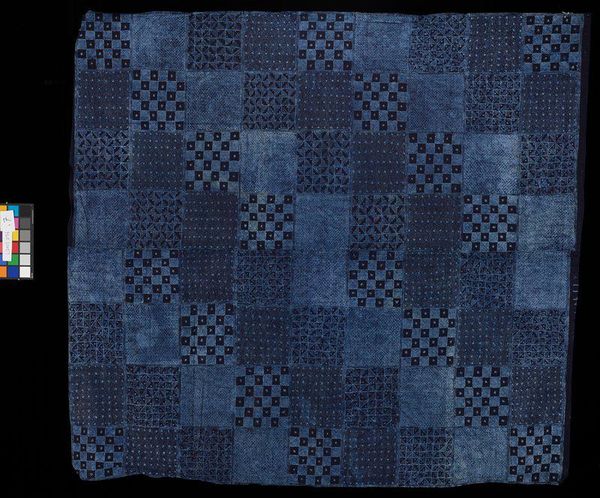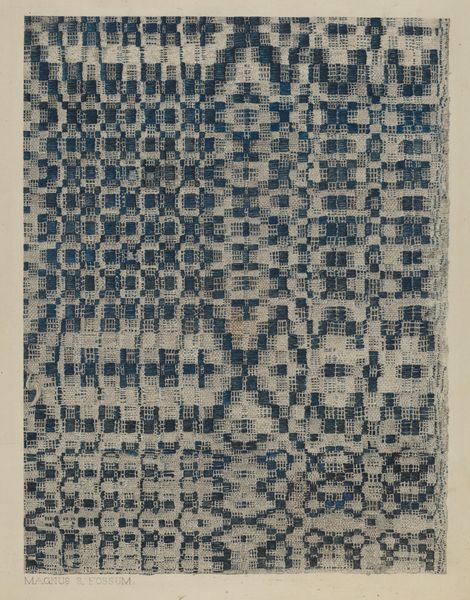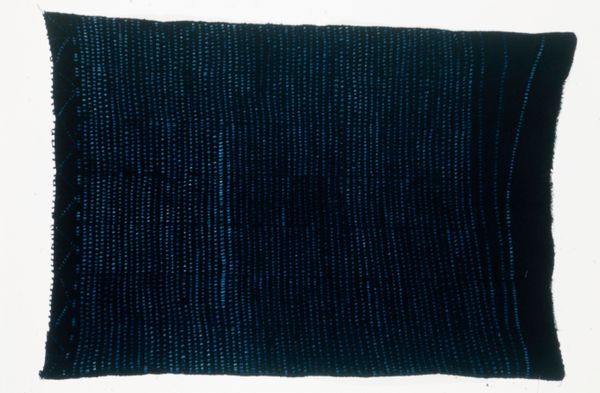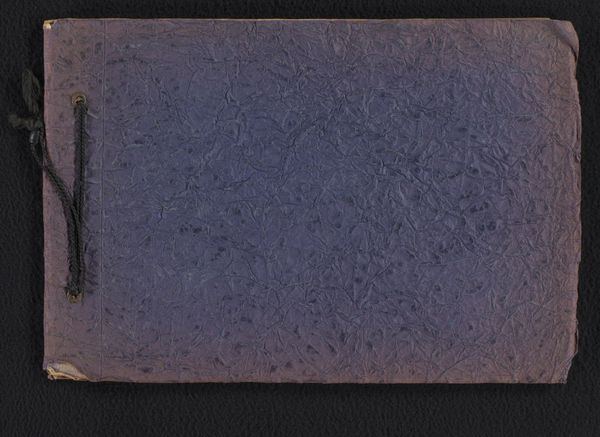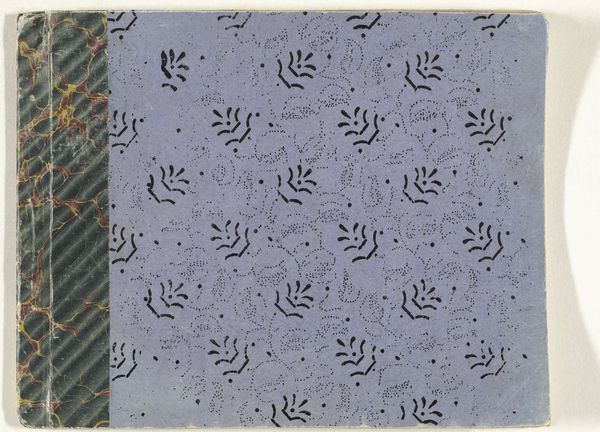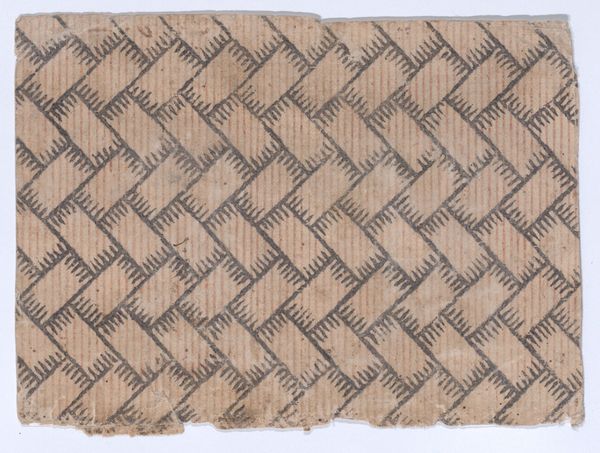
textile, cotton
#
african-art
#
pattern
#
textile
#
geometric
#
cotton
#
yoruba-art
Dimensions: 75 5/8 x 69 3/8 in. (192.09 x 176.21 cm)
Copyright: Public Domain
Editor: Here we have an "Adire (wrap)" textile, dating from around the 20th century, crafted by the Yoruba people. I’m struck by the intricacy of the indigo patterns on the cotton cloth, all these little geometric shapes. What can you tell me about it? Curator: What interests me most is the production process. "Adire" translates to "tie and dye," but that covers several different resist-dyeing techniques. Looking at this piece, the tight geometric patterns suggest 'adire alabere', where raffia is stitched onto the fabric to create the resist. The labor involved is significant. Editor: So it's not just the design, but also the process of creating it that we should focus on. Who was making these? Curator: Traditionally, Yoruba women were the primary producers of adire cloth. It was a significant source of income and a way to participate in the economic life of their communities. Thinking about this materially, consider access to resources like indigo dye and cotton cloth. Did they grow their own cotton? How was the dye sourced? These aspects impacted the textile's availability and cost, and hence who wore it. Editor: It's easy to forget the labor and the materials involved when looking at something beautiful. Do you think the consumption of this 'wrap' says something about its purpose for the Yoruba people? Curator: Absolutely! This wasn't mass-produced. Each piece held a certain uniqueness that reflected both the maker and potentially the wearer, demonstrating status or conveying cultural identity. Further, consider its place now, within a museum; How does removing this textile from circulation – as a source of cultural wealth, and as a means of income – alter its meaning? Editor: It's interesting to consider its journey and how its meaning changes depending on its context. It really highlights the complexity embedded in something seemingly simple. Curator: Exactly. By understanding the means of its creation, we unlock so much more meaning.
Comments
No comments
Be the first to comment and join the conversation on the ultimate creative platform.
